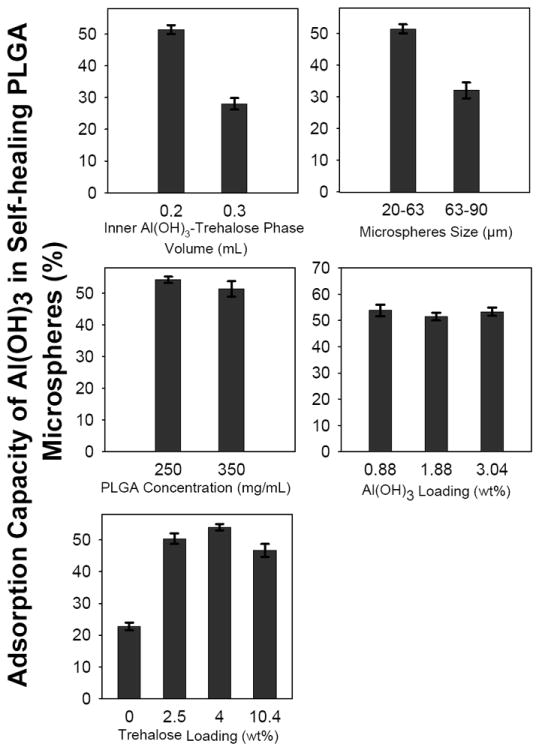Fig. 4.

Determination of adsorption capacity of aluminum hydroxide adjuvant (Al(OH)3) accessible in self-healing PLGA microspheres (ASM-2 to ASM-7 and ASM-10 to ASM-16, Table 1) for ovalbumin (OVA) loading as a function of the following microsphere formulation variables: inner Al(OH)3-trehalose phase volume (0.2 (ASM-2) and 0.3 (ASM-3) mL), microspheres size (20-63 (ASM-4) and 63-90 (ASM-5) μm), PLGA concentration (250 (ASM-6) and 350 (ASM-7) mg/mL), Al(OH)3 loading (0.88 (ASM-10), 1.85 (ASM-11), and 3.04 (ASM-12) wt%), and trehalose loading (0 (ASM-13), 2.5 (ASM-14), 4 (ASM-15) and 10.4 (ASM-16) wt%). Fraction of Al(OH)3 accessible in PLGA microspheres for OVA adsorption was calculated by dividing the mass of OVA sorbed by active SM microspheres/mass of Al(OH)3 in microspheres with mass of OVA adsorbed by unencapsulated Al(OH)3/mass of unencapsulated Al(OH)3. Twenty mg microspheres (20-63 μm in size) or unencapsulated Al(OH)3 (mass equivalent to the actual content of Al(OH)3 in 20 mg microspheres) were incubated with 0.4 mL of 1 mg/mL OVA in 10 mM MOPS buffer (pH 7.4) under mild agitation at 25 and 42 °C respectively for 24 and 48 h. Bars represent mean ± SEM, n = 3.
